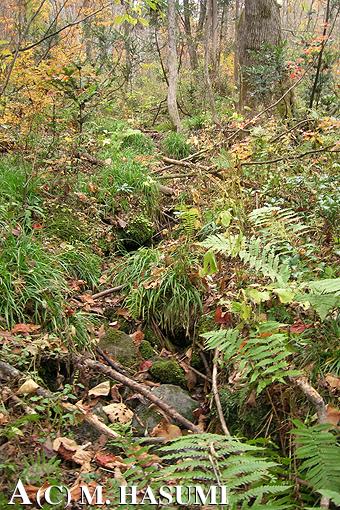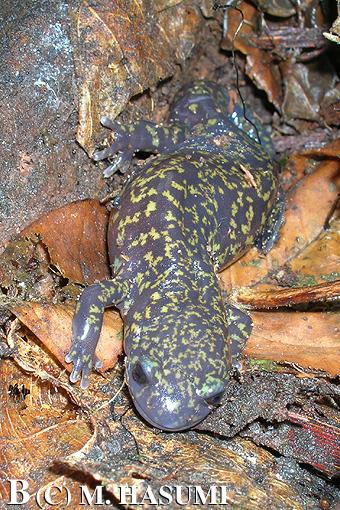

 |  |
(A) A slower-flowing stream (water temperature = 9.3 C, water pH-data = 6.6-6.7) that was utilized for hibernation and the succeeding breeding of H. kimurae and was located at the side of a swamp and an upper wetland, in which two hynobiid salamanders (Hynobius hidamontanus and Onychodactylus japonicus) dwelled. At the time of examination, this stream contained 1 male (body mass = 8.7 g, broadest head width = 12.32 mm, maximum tail height = 9.39 mm, snout-anterior vent length = 57.15 mm, snout-posterior vent length = 63.52 mm, tail length = 44.22 mm) of H.kimurae with four toes in both hindlimbs under a stone, 3 larvae of O. japonicus, 1 male and 1 juvenile of the brown frog Rana tagoi, and at least 3 juveniles of Rana ornativentris.
(B) A gravid female (body mass = 7.9 g, broadest head width = 11.93 mm, maximum tail height = 7.41 mm, snout-anterior vent length = 61.50 mm, snout-posterior vent length = 67.17 mm, tail length = 44.34 mm) of H. kimurae, having four toes in both hindlimbs, that was hidden under a decaying log above ground on land (soil pH = 5.9) with a distance of approximately 1 m from the stream. She had a cloacal swelling, copious secretion of mucus on the skin, and yellowish maturing follicles in the ova that were visible through the skin, suggesting her wandering in and out of the water.
Accompanied Research Collaborators: Masaichi Kakegawa (Tokyo Metropolitan Komatsugawa Senior High School) and Fujio Kishi (Shirouma Association of Naturalists).